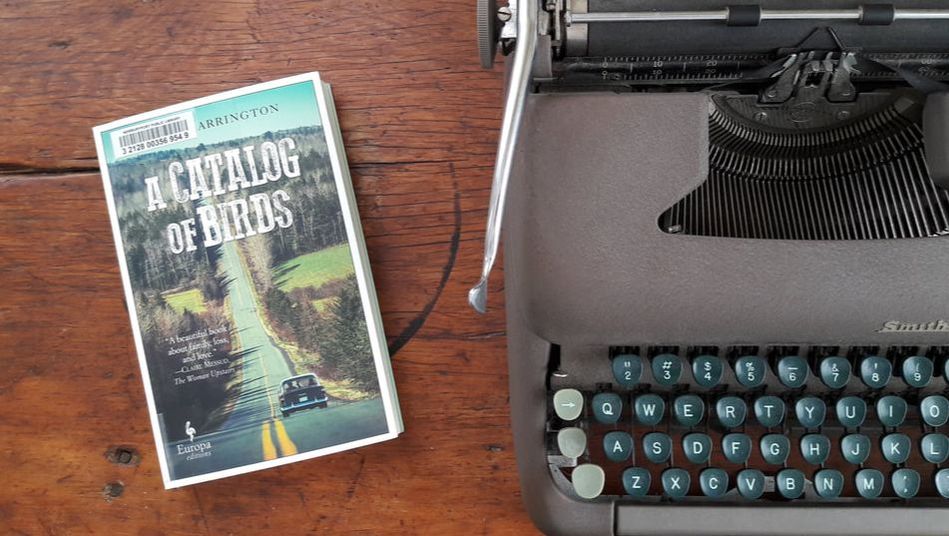Musings |
"Don't just disappear on us." I was born in the mid-1970s, in the shadow of the Vietnam War. I was too young to have any first-hand memories of the war, but not too young to eavesdrop on hushed conversations. I quickly learned the Vietnam War was a topic that was not suitable for young ears. That, of course, made it irresistible. I remember playing in the living room while my parents watched the news and surreptitiously paying attention in case anything of relevance came on the television. Eventually, I learned that lyrics to the songs on the radio were also a good source of information. I grew up listening to Peter, Paul and Mary, Crosby, Stills, Nash and Young, Joan Baez, The Byrds, Creedence Clearwater Revival, Bob Dylan and Simon and Garfunkel. And I remember watching Robin Williams in Good Morning, Vietnam. But true understanding—then as now—came from books. Laura Harrington’s latest novel, A Catalog of Birds, takes place in upstate New York in 1970. Nell Flynn is about to graduate from high school to attend Cornell when her beloved older brother, Billy, comes home from Vietnam severely injured and struggling to understand why he survived while his co-pilot, a husband and father of two small children, did not. Billy was not drafted to serve, but volunteered in order to become a pilot. Before the war, he and Nell spent hours watching birds and trying to build wings that would allow them to fly. By the time he was 12, Billy’s field journals were full of precise and detailed drawings of birds. He knew the species just by listening to their calls. But when he returns from Vietnam with severe burns and extensive nerve damage, he can no longer use his right hand, and his hearing is so impaired that he often can’t hear the birdsong. Plagued by nightmares, PTSD and survivor’s guilt, Billy falls into a deep depression and turns to alcohol to dull the pain. But it is not just Billy’s body and spirit that have been destroyed. Nell volunteers to measure mercury levels in songbirds and notes that the toxin attacks a bird’s nervous system causing it to be too distracted to sit on their eggs long enough for them to hatch. Jack, Billy’s father, desperately tries to save the Elm trees in their yard and monitors water and soil contamination from pesticides. Billy talks about the chemicals they used in Vietnam, and how at first his primary concern was for the birds:
Now that he’s returned from the war and struggling with his own health issues, he sees a much larger picture:
Harrington’s writing is quick and sharp; it hurls you through the story and makes it difficult to catch your breath. An award-winning playwright, it perhaps should come as no surprise that she is a master at setting the scene and writing poignant, believable dialogue that somehow manages to avoid feeling like a lecture. The resulting story is rich and complex, made even more powerful by Harrington’s willingness to unflinching dig into the traumas of war. But there is one subplot that feels underdeveloped and takes away from the whole: the unsolved disappearance of Nell’s best friend and Billy’s girlfriend, Megan. Disappearance is one of the core themes of the book, but we barely know Megan when she disappears. And while we are repeatedly told that she was Billy’s girlfriend and, once upon a time, Nell’s best friend, we are never really shown how important she was to either of the main characters. Harrington missed an opportunity to let us get to know Megan, to care about her and puzzle over her disappearance. Because this subplot was never fully integrated into the novel, it felt like an unnecessary distraction. Harrington’s writing is compelling, beautiful and disconcerting. Her words propel you through the story. Nothing about this novel is comfortable, and that is one of its greatest strengths. Harrington doesn’t allow us the luxury of plausible deniability; she holds us accountable for the damage we do to one another and the natural world. I appreciate the discomfort this book causes, and the complexity and richness of the plot is incredibly gratifying. But the storyline about Megan never felt incorporated into the rest of the novel. It felt secondary. And that is its greatest weakness. ★★★ A Catalog of Birds, a novel by Laura Harrington, published by Europa Editions in 2017. This book review is presented as part of my personal challenge to read and write a thoughtful review of at least 30 books in 2018. To learn more about this challenge, the books I have selected, and my imperfect rating system, click here.
0 Comments
Leave a Reply. |
|
|
The Scribbler's Journal
|
Contact |



